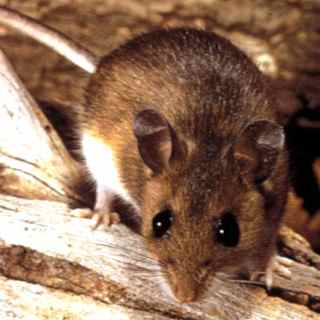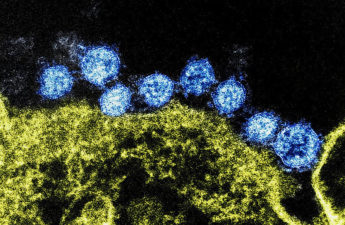Public Health Insider, Public Health – Seattle & King County
Hantavirus can cause a rare but deadly disease called Hantavirus Pulmonary Syndrome (HPS). Hantaviruses are a group of viruses (germs) carried by rodents, and Sin Nombre virus is the type found here. As the weather turns colder and rodents seek shelter from the elements, residents of King County should remain aware of hantavirus and safety measures to prevent exposure.
HPS is rarely identified in Washington state, with only 45 cases reported since 1997, mostly in eastern Washington. Since 1997 there have been eight cases of HPS in King County, including a recent case we are currently investigating in an adult resident of southeast King County, who was hospitalized in December 2021 and is now recovering. The patient reported likely exposure to a mouse infestation.
Of these eight cases, five are believed to have been acquired within King County, including this most recent case. The last confirmed case in King County was in 2017, when we had a cluster of three locally acquired cases between December 2016 to March 2017.
Although we are not aware of an increased risk for hantavirus exposure in King County, it is important that people are aware of the risk and symptoms to watch for and know how to identify and properly respond to rodent infestations. There is no vaccine or specific treatment for HPS, so minimizing exposures to rodents and their nests is key.
What animals carry hantavirus?
In Washington state, hantavirus is carried only by deer mice. Deer mice infected with hantavirus appear healthy and do not get sick themselves. In other parts of the U.S., other rodents can also carry the disease. It is not carried by rats or house mice in our region, but it can be difficult to distinguish between types of rodents based on appearance.

Who is at risk for hantavirus infection?
A person most often gets infected with hantavirus by breathing in the virus from activities that put people in contact with rodent droppings, urine, saliva, or nesting materials. Hantavirus spreads when dust that contains the virus is stirred up into the air, such as when people sweep or vacuum in rodent-infested areas. Less frequently, people get infected by touching their eyes, nose, or mouth after handling any contaminated rodent materials, or by being bitten by an infected rodent. Hantavirus is not spread person-to-person.
Rodent infestations in and around the home, other indoor spaces, or workplace are the primary risk for hantavirus exposure. Deer mice tend to live in wooded areas in Washington state and can nest in homes, garages, outbuildings, sheds, cabins, barns, other structures, and cars, but have also been reported to live in suburban settings. A home or building does not need to be old or dilapidated to have nesting rodents.
Activities that may place a person at higher risk for exposure to hantavirus include:
- Using or cleaning previously unused buildings, cabins, sheds, barns, garages, and storage facilities (including those which have been closed during the winter or for extended durations), especially in rural or woodland settings.
- Housecleaning activities in and around homes with rodent infestations (see information on safe cleaning in our Hantavirus Fact Sheet and CDC Hantavirus brochure).
- Work-related exposures, such as construction workers, utility workers, campground/park service staff, and pest control workers can be exposed when they work in crawl spaces, under houses, in and around cabins, or in vacant buildings that may have a rodent population.
- Outdoor recreation: campers and hikers can be exposed when they use infested trail shelters (including cabins, yurts, or other man-made shelters) or camp in rodent habitats.
- Exposure to cars, trailers, or mobile homes where rodents are living (see specific guidance for cleaning up vehicles).
The chance of being exposed to hantavirus is greatest when people live, work, or play in closed spaces where rodents are actively living. Many people who have had HPS reported they had not seen rodents or their droppings before becoming ill. Everyone should take steps to prevent rodent infestations even if you do not see evidence of rodents.
Symptoms of hantavirus infection
If you have been exposed to rodents or rodent infested buildings and have symptoms, see your doctor immediately and tell them about your possible rodent exposure. Symptoms begin 1-8 weeks after exposure to the virus. Infection with hantavirus typically starts with 3-5 days of illness that is similar to the flu, including fever, sore muscles, headaches, nausea, vomiting, and fatigue. As the disease gets worse, it causes coughing and shortness of breath. People with HPS are usually hospitalized, and about one out of three people diagnosed with HPS have died. Although there is no treatment to cure infection, supportive care may be helpful, especially when begun earlier.
Hantavirus prevention
Keep wild rodents out of your home and workplace by removing their sources of food, water, and shelter. If you do have a rodent infestation, it’s important to take precautions to safely clean up the area. Learn specifically how to prevent rodent infestation and clean up rodent infestations at Public Health’s hantavirus factsheet, Public Health’s Environmental Health Services site, and the CDC hantavirus factsheet.
Rodent infestations
Public Health Environmental Health Services should be consulted (206-263-9566) and special precautions are suggested for cleaning homes or buildings with:
- heavy rodent infestations (piles of feces, numerous nests or dead rodents)
- vacant dwellings that have attracted rodents while unoccupied
- dwellings and other structures that have been occupied by persons with confirmed hantavirus infection.
Public Health recommends hiring professional pest control services in these situations.
Rodent infestations in vehicles
There have been reports of rodent infestations in vehicles as a possible route of hantavirus exposure. The same principles that are described for cleaning a home infested with rodents apply to cleaning a vehicle infested with rodents. Signs of rodents include a foul odor, chewed wires or other components under the hood, and visible nesting material and excrement in the vehicle. (See guidance on cleaning up after rodents in cars).
More information
CDC | Protect Your Family from Hantavirus
CDC | Información sobre los Hantavirus
CDC | Prevent Hantavirus Pulmonary Syndrome: A guide for tourists, campers, and hikers
WA DOH | Information about Hantavirus in Washington StatePublic Health – Seattle & King County | Resources for the General Public
Originally published December 30, 2021.


